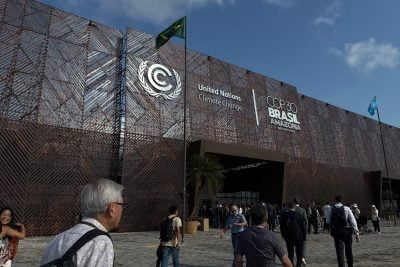On March 15, US President Joe Biden issued a round of sanctions on Moscow over its invasion of Ukraine. The measures included a ban on importing a range of luxury Russian goods, including diamonds.
On Thursday Washington went a step further by blacklisting Russian miner Alrosa, that is one-third owned by the Russian government.
The latest measures effectively prohibit trade with Alrosa’s group of diamond mining companies that specialize in the exploration, mining, manufacture, and sale of diamonds, and deny them access to the US financial system.
The sanctions will also hit entities in which Alrosa has a 50%, or greater share.
With the sanctions coming from the largest diamond market in the world, the US, that accounts for nearly half of global demand for polished diamonds, diamond companies can’t afford to side-step the measures, experts say.
The sudden drop in marketable Russian diamonds will provide a boost to African mining countries as diamond companies scramble to fill the supply gap, says global diamond analyst Paul Zimnisky.
“Many diamond industry participants from cutters to polishers, traders, wholesalers will begin to segregate their supply-chains via “non-Russian” and “Russian” goods, so they can effectively cater to their respective clients,” he says.
“The diamond industry has the capability via technology and other means, such as audits, to do this effectively.”
Earlier this month the two largest diamond jewellers in the world, Tiffany & Co. and Signet Jewelers, instructed their distribution partners not to purchase any diamonds of Russian origin on their behalf, Zimnisky explains.
“This could result in non-Russian diamonds trading at a premium in the short-to-medium term, similar to what we have seen with non-Russian oil and gas.”
The boost for African miners comes at a time when the African diamond industry is regaining its sparkle, as recovering demand stokes optimism after two years of lockdown restrictions took a heavy toll on diamond prices.
Pipe down?
While Alrosa’s major diamond mines are in Russia, which holds the biggest diamond reserves in the world, it has expanded its operations in Africa over the past few years, notably in Angola, Botswana, and Zimbabwe.
The sanctions are unlikely to impact operations at Angola’s largest mine Catoca, as Alrosa only holds a 40% stake in the mine with a consortium of other international miners, Zimnisky says.
Catoca produced more than 6 million carats of rough diamonds last year, accounting for 70% of Angola’s diamond production, and is expected to hold 60 million carats.
However, the sanctions may disrupt the development timeline of Angola’s new Luaxe diamond deposit which was on pace for commercial production in 2023 or 2024, Zimnisky says.
Angola’s state-controlled diamond miner Catoca and Alrosa found Luaxe’s Luele pipe embedded in the country’s eastern Lunda Sul province in 2013.
In 2021, Alrosa produced 32.4 million carats with sales exceeding $3 billion and accounted for approximately 25 per cent of the global diamond production.
Want to continue reading? Subscribe today.
You've read all your free articles for this month! Subscribe now to enjoy full access to our content.
Digital Monthly
£8.00 / month
Receive full unlimited access to our articles, opinions, podcasts and more.
Digital Yearly
£70.00 / year
Our best value offer - save £26 and gain access to all of our digital content for an entire year!
 Sign in with Google
Sign in with Google 



